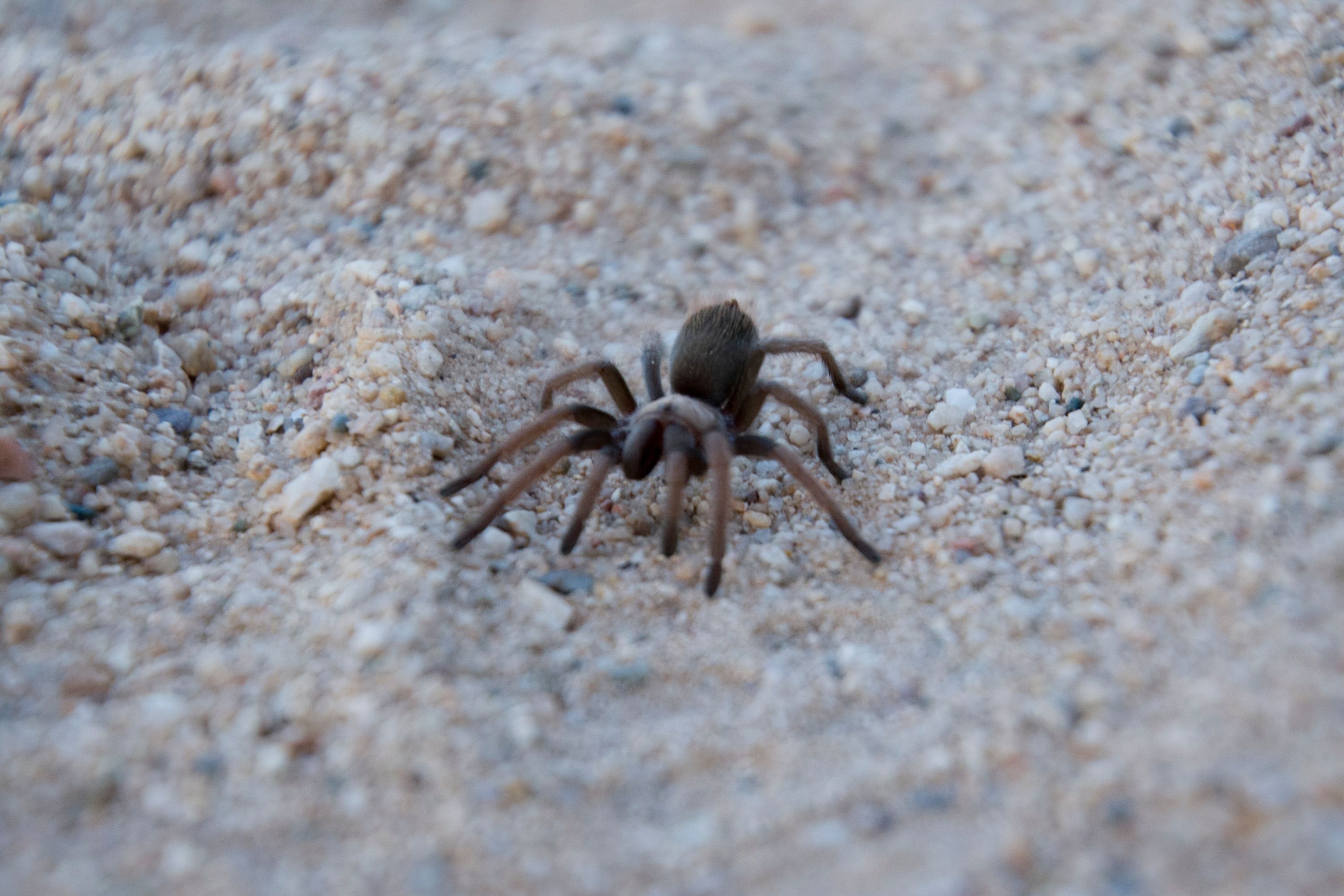Western desert tarantula
(Aphonopelma chalcodes)

Description
Aphonopelma chalcodes, commonly known as the western desert tarantula, Arizona blond tarantula or Mexican blond tarantula is a species of spider belonging to the family Theraphosidae. It has a limited distribution in the deserts of Arizona and adjacent parts of Mexico but can be very common within this range. The common name "blond tarantula" refers to the carapace, which is densely covered in pale hairs, and contrasts strongly with the all-dark legs and abdomen. Additionally, these spiders have low toxicity, a long life expectancy, and several offspring. This 3 to 5 in (8 to 13 cm) large bodied, burrowing spider is commonly seen during the summer rainy season in southwestern deserts. The female is usually a uniform tan color. The male has black legs, a copper-colored cephalothorax and a reddish abdomen. The female body length is up to 56 mm, males only reaching 44 mm. Their burrows can be as large as 1 to 2 in (25 to 51 mm) in diameter, with some strands of silk across the opening. Multiple lectins have been detected in the serum of Aphonopelma chalcodes. Simply, lectins are proteins that bind to carbohydrates. Research studies illustrate that the lectins within the serum of A. chalcodes have the ability to bind to sialic acid. The function of sialic acids is diverse, including contributing significantly to protein folding, neural development, and metabolism. However, the implications of the lectins binding to sialic acid must be investigated further. Aphonopelma chalcodes, the western desert tarantula, occupies several states within the southwestern United States. Specifically, these spiders are known to be common in New Mexico and Arizona within the United States. This spider often lives in desert soil and is resistant to harsh weather. These spiders often reside in burrows which they create for themselves. These burrows are very deep in order to help the spider resist and adapt to fluctuations in environmental temperature. However, when temperatures are between 23˚C and 31˚C, these spiders leave the burrows into the general outdoors. A. chalcodes makes residence in burrows through digging under a stone or living in isolated burrows that are not being used. The entrance to the burrow is surrounded by strands of silk, which allow the spider to detect that prey are present while it is hiding in the burrow.
Taxonomic tree:







